I had just been introduced to birdwatching. The new found hobby took me out on forays into the scarce wilderness on the outskirts of Bangalore.
On one such outing, the morning had progressed and the bird activity had substantially reduced. As I was walking through the thorny shrubbery, I espied a white flower at a distance. It seemed to belong to a creeper that had worked its way through a lantana bush using its tendrils. Something about the flower drew me to it.
I got close to the lantana bush only to be, at first instance, smitten by the beauty of the flower. The flower was not just white as it appeared from a distance; it had some pink, green and yellow too!
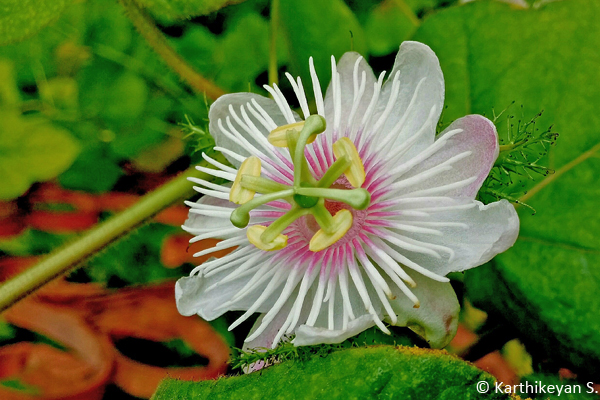
The beauty of Passiflora foetida was captivating
I had seen colourful flowers earlier. Why did this one look so special and captivating? As I kept staring at the flower, I noticed that it had petals, beautiful tentacle-like structures and an interesting arrangement of anthers and stigmas (reproductive organs) – all at different levels. It had a very different appearance and a tiered one at that. I reveled in the moment and forgot all about the flower until much later.
A couple of years elapsed and I got interested in butterflies. I was watching the larvae of a butterfly feed on the leaves of a creeper when my eyes fell on the exquisite flower yet again. This creeper was the food plant of the Tawny Coster butterfly!
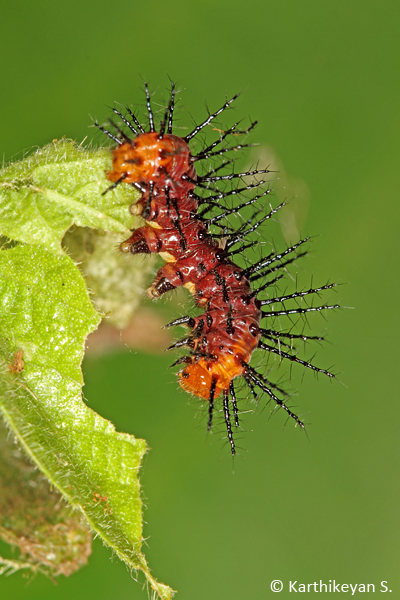
Larva of the Tawny Coster feeding on Passiflora.
All this was some three decades ago.
In more recent times, my mother was given a sapling of the Passion fruit. She happily planted it in our garden. Since it had the space and resources, it spread rapidly all over. It didn’t spare the huge jamun tree either. We enjoy the creeper dangling down and almost forming a leafy curtain in front of our door. It bears lovely flowers that eventually turn into sour fruits, the pulp of which is best consumed as a juice with a lot of sugar, the insipid edible crunchy seeds keeping your teeth busy.
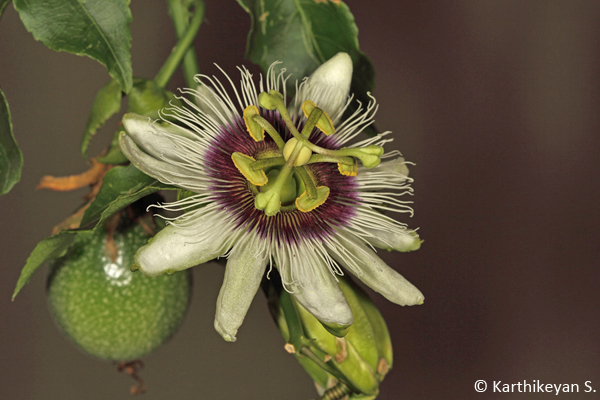
Passion Fruit with the unripe fruit in the background.
I have also come across other beautiful Passifloras – while some have a heady odour, others grab your attention in a garden full of flowers.
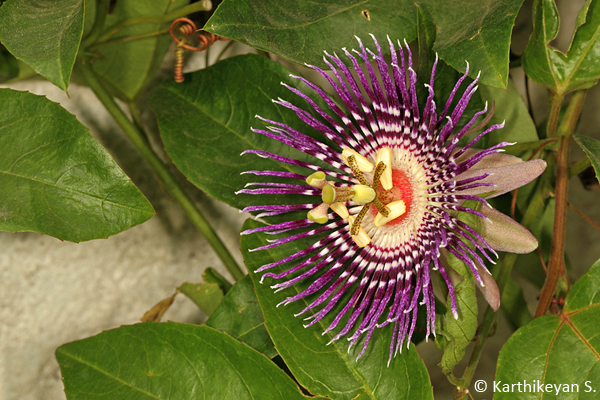
Passiflora incarnata – a beautiful flower with an equally heady fragrance!
Many of them can be grown on a trellis, forming a nice shade or even a live curtain. Depending on the species you plant, you get treated to some lovely blossoms and /or some edible fruits!
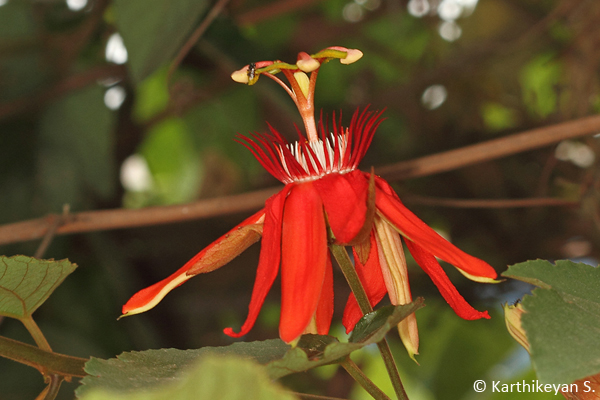
The bright colour of Passiflora coccinea grabs your attention.
In this article, I have presented just a few species that I have come across both, in the city and in the wild.
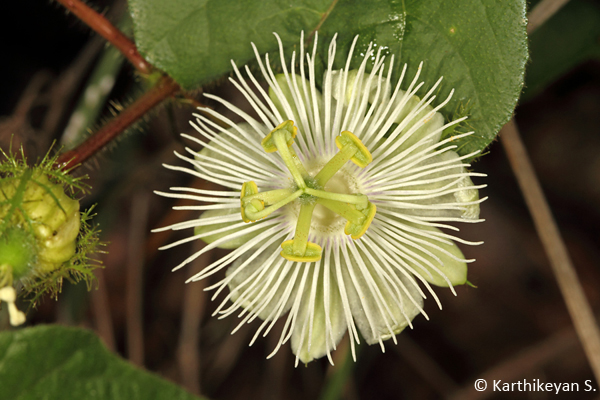
The more demure Passiflora subpeltata that grows wild.
However, the family Passifloraceae consists of about 750 species and at least 500 of them belonging to the genus Passiflora. Most Passifloras are vines while some grow into trees too. Members of the genus Passiflora are distributed across South America, southern Asia and as far as Papua New Guinea. And, like the Tawny Coster in India, several Heliconius sp. butterflies use the Passifloras as their larval host plant; the plant has evolved some interesting strategies to prevent too many eggs being laid on the plant. If you let curiosity get the better of you, and indulge in a little fact finding, you are quite likely to be amazed.
Now out of nowhere, there is a Passiflora foetida growing in my garden! Wonder where it came from… Will the Tawny Coster follow? Only time will tell.
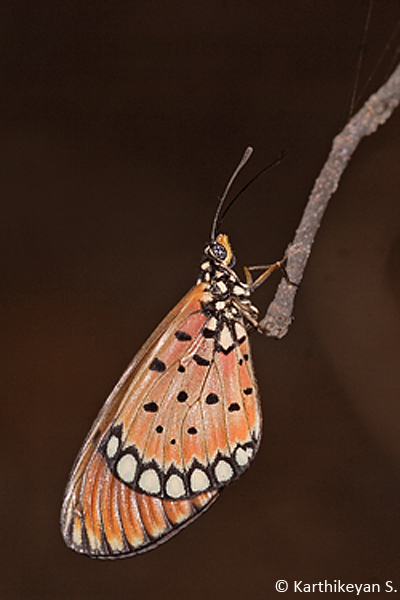
Tawny Coster